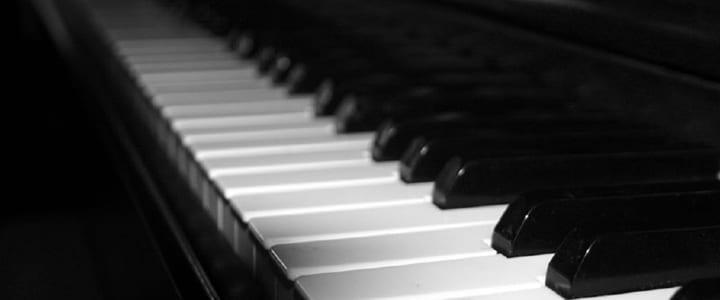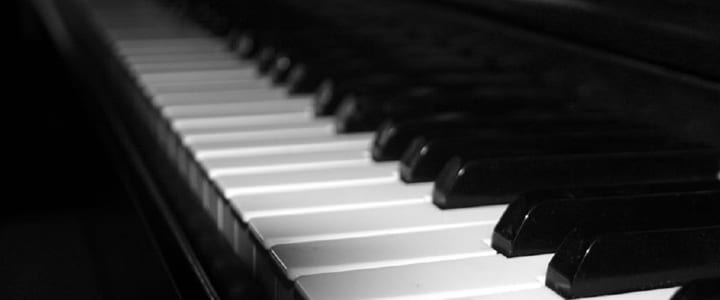Are you intimidated when you see a large leap coming up in your piano music? Don’t fret! Take control with these tips from New York, NY teacher Nadia B...
Leaps are one of many piano techniques, but an especially important one because they are common and often challenging to execute; moreover, in learning to execute leaps you will also master other important piano techniques, including preparation, rotation, breathing, and making use of the weight of the hand. The following tips will help you explore and master leaps on the piano.
Think Ahead
Have you heard the expression “Look before you leap”? For piano leaps, I would modify that to “think before you leap.” I encourage students to institute a slight pause during practice right before the leap to mentally organize the concept of which keys you will be striking. You can practice this by pausing, mentally organizing the leap and then not executing it, and then, alternatively, leaping but simply reaching the keys instead of pressing them, and then leaping and actually playing the chord or note. This practice trick works well because it is addressing the most important part of the leap, which is not the fingers pressing the keys but rather the mind telling the fingers to press the keys – that is, which keys, with which fingers, and with which hand shape. The way I work with this in my own practice is that I pause for as long as needed to organize my execution of the leap. If I can’t visualize it clearly in my mind, I don’t move on. This pause becomes shorter and shorter as the mind-body connection strengthens.
Keep Breathing
A leap is one of the most difficult piano techniques, and, whenever something is challenging, a common reaction is to stop breathing and stiffen the body, including the hands and arms. However, this is the opposite of what is needed, especially in a leap where actual movement across the keyboard is involved. To work with this, you can make sure you don’t hold your breath as you work on the leap, even if noticing your breathing means that you initially mess up the leap. I recently read a slogan in an article about perfectionism that stated, “It’s not failure, it’s data.” If you find that you cannot not hold your breath and execute the leap accurately, you could take this opportunity to ask, “What data am I receiving from this experience? Why is it challenging to feel at ease in my body and allow the breath to come in and out and do the leap at the same time?” You may discover a pattern in your body that you weren’t previously aware of; letting go of it may allow the leap to occur more easily and naturally.
Be Mindful of Your Movements
Feeling the weight of the hand is another way to make sure you aren’t gripping the muscles of the forearm, armpit, and hand, but also a way to add certainty and substance to the leap. While you don’t want to hold the body, arm, and hand stiff and without movement, it’s also not desirable to completely lose any sense of tone and substance in the hand. See if you can sense the weight of your hand as it moves through space from one position to the other, and notice the ability it possesses to rebound and spring away from the keys after it strikes them. This sensation of springy weight offers a reference for where you are on the keyboard, where you are going, and how to get there. It’s another source of “data” you can rely on. Lastly, also remember to feel the weight of your torso releasing into the piano bench in relation to sensing the weight of your hand.
When we are leaping at the piano, we generally need to move the whole arm along with the hand. Make sure you are allowing the hand and arm to work as one unit, all originating in the back. Since your arm and hand are obviously physically connected to your torso and back, make sure you are also feeling the energetic connection that exists. Imagine in your mind a line that starts in the low back, travels up the back, out the shoulder, down the arm, and out the fingertips. All of this line functions as one when a leap occurs. Also remember that the arm and hand have an ability to rotate. While you may not need a huge amount of rotation for a leap, sensing a subtle spiraling rotation as your hand and arm fly through the air can give the leap increased momentum and clarity.
Hopefully these tips will help you leap with confidence, poise, and strength. Don’t forget that the skills you are working on with leaps will also help you improve your general piano playing and technique by ‘leaps and bounds’!
 Nadia B. teaches flute and piano in New York, NY, as well as through online lessons. She acted as principal flutist of the orchestra and wind ensemble at California State University, Sacramento, and then went on to receive her degree in Music Performance from New York University. Learn more about Nadia here!
Nadia B. teaches flute and piano in New York, NY, as well as through online lessons. She acted as principal flutist of the orchestra and wind ensemble at California State University, Sacramento, and then went on to receive her degree in Music Performance from New York University. Learn more about Nadia here!
Photo by Tabitha Kaylee Hawk
Suzy S.


